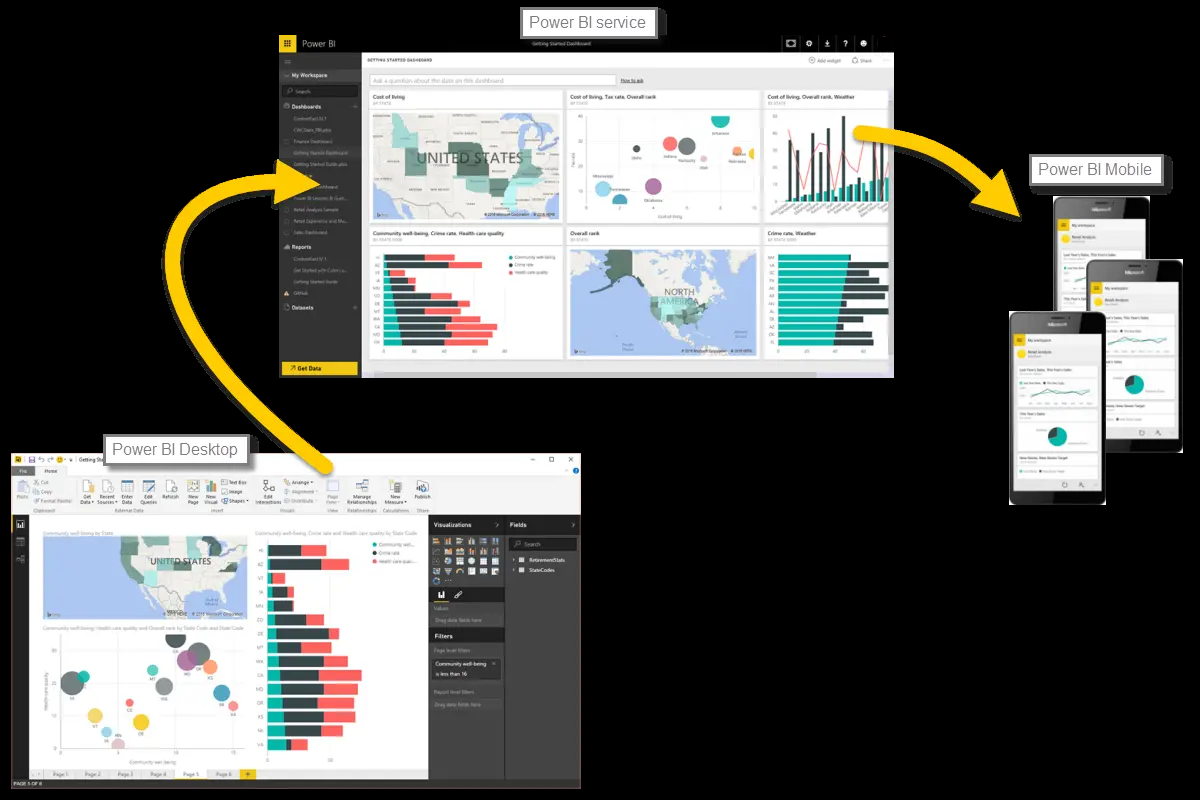Match Power BI to your Role
May you know - when to use Power BI that suits your role?
How you use Power BI might depend on your role on a project or a team. And other people, in other roles, might use Power BI differently, which is just fine.
For example,
You might view reports and dashboards in the Power BI service, and that might be all you do with Power BI. But your number-crunching, business-report-creating coworker might make extensive use of Power BI Desktop (and publish Power BI Desktop reports to the Power BI service, which you then use to view them).
And another coworker, in sales, might mainly use her Power BI phone app to monitor progress on her sales quotas and drill into new sales lead details.
You also might use each element of Power BI at different times, depending on what you're trying to achieve, or what your role is for a given project or effort.
These are the search key terms power bi desktop,power bi tutorial,power bi training,power bi download,power bi login,power bi for mac, power bi free,power bi architecture,power bi.
Perhaps you view inventory and manufacturing progress in a real-time dashboard in the service, and also use Power BI Desktop to create reports for your own team about customer engagement statistics. How you use Power BI can depend on which feature or service of Power BI is the best tool for your situation. But each part of Power BI is available to you, which is why it's so flexible and compelling.
We discuss these three elements—Desktop, the service, and Mobile apps—in more detail later. In upcoming units and modules, we'll also create reports in Power BI Desktop, share them in the service, and eventually drill into them on our mobile device.
To elaborate a bit more about Power BI - What are the building blocks that covers Power BI in creation - here it is
User Power BI
As you learn about all the things that can be done with Power BI, keep in mind that all these activities, and all the analysis that's done with Power BI, generally follow a common flow. The common flow of activity in Power BI looks like this:
- Bring data into Power BI Desktop, and create a report.
- Publish to the Power BI service, where you can create new visualizations or build dashboards.
- Share dashboards with others, especially people who are on the go.
- View and interact with shared dashboards and reports in Power BI Mobile apps.

As mentioned earlier, you might spend all your time in the Power BI service, viewing visuals and reports that have been created by others.
And that's just fine.
Someone else on your team might spend all the time in Power BI Desktop, which is fine too. To help you understand the full continuum of Power BI and what it can do, we'll show you all of it. Then you can decide how to use it to your best advantage.
Until here, explained how it suites your role and features to make use, however if you would like to know more on Power BI - Simple way to use
Summary
So to conclude, we have seen how effectively Power BI can be used based on the role you play in a team.
There are other guides to check out on What exactly Power BI, just below this line
The easy and best way to optimize your report in Power BI Desktop tool

0 Comments